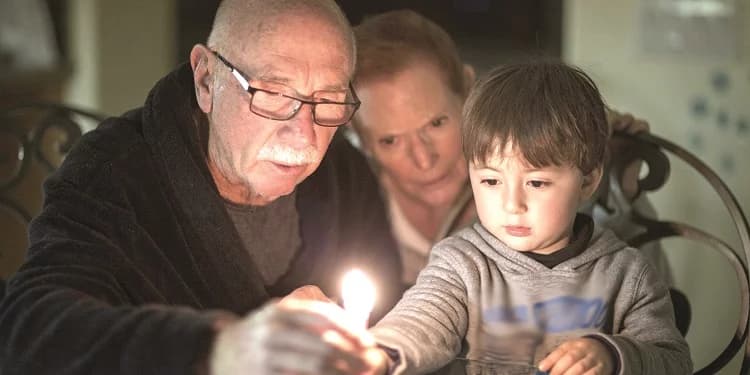Celebrating Hanukkah

A Brief History
At Hanukkah, Jews commemorate the victory of the Maccabees over the Greek/Syrian forces of King Antiochus in the year 165 B.C.E. That regime sought to impose paganism on the Jewish people. They put a pagan idol, Zeus, in the Temple, and forced Jews to eat non-kosher food.
A group called the Maccabees, led by a man named Mattathias and his brothers, revolted against these Hellenistic authorities. And by the 25th day of the Jewish month of Kislev—usually this date falls during December on our calendar—they regained control over the Temple, cleansed it from defilement, and rededicated it. That’s what Hanukkah means: “rededication.”
In the Temple, there was an eternal flame that had to stay lit all the time. But when the Jews came into the Temple to light the flame, there was only enough oil to keep it burning for one day. After they lit it, however, a miracle occurred—the lamp remained lit for eight days until the new oil arrived. This is how Hanukkah became known as the “Festival of Lights.”
The Meaning of Hanukkah
These historical events inspired the celebration of Hanukkah, and the day has special meanings that are important for us to ponder even today.
The first is religious liberty—the right of people to celebrate their holy days and worship freely. That right is still being challenged, and in some countries, Christians are just as threatened as Jews.
Second, the Jews’ rededication of the Temple after it was defiled should serve as a reminder that each of us is a small temple, with God’s presence in our hearts. We need to rededicate ourselves to God—to purify our hearts.
The final aspect is trust in God. It took great faith for the Maccabees to rise up against the great Hellenistic society. And it also took great trust to light that first candle, knowing that it was likely to go out in 24 hours. It took strength and spiritual tenacity to say, “I am going to light this candle in the darkness anyway.” In a similar manner, we need to light candles in the darkness when we have the opportunity to do so as well.
How Hanukkah Is Celebrated Today
During Hanukkah, Jews light the menorah. They light one candle each night of Hanukkah and offer prayers thanking God for His miracles performed for their ancestors.
Candles are added one night at a time, from the right to the left, just as the Hebrew language reads from right to left. The menorah is placed by a window so that people can see this reminder of the miracles that happened.
Gifts are often given at Hanukkah, especially to children. Another tradition is playing dreidel, a game using a small square spinning top. Tradition links this game to the time when the pagan king Antiochus Epiphanes was oppressing the Jewish people and trying to force them to assimilate into Greek culture. Antiochus made it illegal to study the Torah, upon punishment of death.
It is said that Jews who studied in defiance of the ban would conceal their activity by having children play games with a toy outside the home, and the children would warn those inside studying the Bible whenever an official or inspector was within sight.
Written on the dreidel are the four Hebrew letters of nun, gimmel, hay, and shin, which form the acronym for the phrase Nes Ga0dol Hayah Sham, “A great miracle happened there,” referring to the miracle of the oil burning in the Temple. In Israel, this liturgy is changed to, “A great miracle happened here.”
